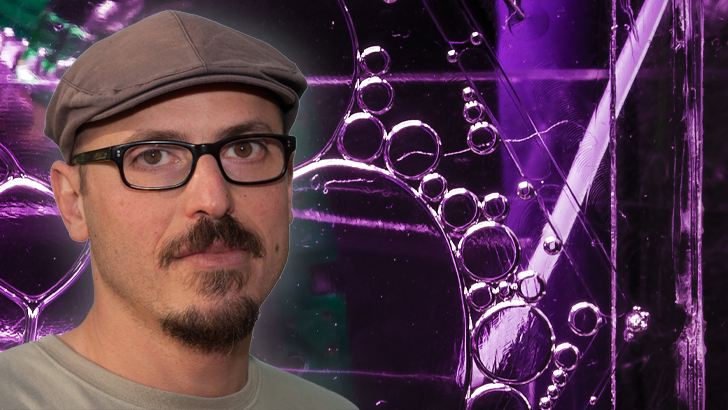Charles Baroud
Head of Pasteur-École Polytechnique joint group on Physical microfluidics & Bio-engineering.
From fundamental research to (co-)launching his own start-ups, from physics to biology – Charles Baroud manages to bring many things together in his career. Following graduation from MIT and the University of Texas at Austin in mechanical engineering and physics, he moved to France for a postdoctoral fellowship in the Statistical Physics Lab at École Normale Supérieure in Paris. In 2002, Charles joined École Polytechnique where he founded the microfluidics research activity and received an ERC Starting Grant in 2011, followed by two ERC Proof of Concept Grants. Since 2017, he has been heading a joint group of Institut Pasteur and École Polytechnique on Physical microfluidics and Bio-engineering.
The group gathers scientists with diverse backgrounds, working at the interface between physical sciences, engineering, mathematical modelling, and applications of these fields to biological sciences. Starting from a fundamental physical approach to microfluidics, Charles and his team have developed a suite of technologies for droplet generation and manipulation. They have been transferring those technologies to companies, through licensing agreements and two spin-outs.
3 questions to Charles Baroud
What do you appreciate most about working at your university and/or your department?
I have taken great pleasure in collaborating with many students and colleagues at Ecole Polytechnique, who brought impressive scientific depth. The size of the school is large enough to cover many complementary areas of science but sufficiently small that it is possible to know many people and initiate discussions and collaborations with them.
The lab where I work (LadHyX) is structured around a tree, a coffee room, and a seminar room, and most people leave their doors open. There is very little hierarchy and students, postdocs, and permanent researchers have lunch and coffee together. Over the years this open environment has been extremely fruitful in building bridges and discussing different topics. I have met people from many countries who share the passion for science and built true friendships and long-term collaborations with them.
Finally, I am always impressed by the Polytechnique students in the classroom. In one class I challenge them to take apart an ink-jet printer and build a musical instrument, a clock, or to sort rice and coffee grains. Every year I am impressed by their creativity, technical skills, and their ability to learn new tools and use them to solve crazy problems. The more difficult the problem the better they perform.
In hindsight, what was/were the decisive factor(s) that got you where you are today?
I have made several atypical (and sometimes risky) choices in my research career that have proven to be decisive: First, I chose early on to combine fundamental and applied research in my group, which has proven to be extremely enriching. Indeed, the strong understanding of the fundamental science has allowed my group to develop unique technologies in the field of microfluidics. These technologies then raised new basic questions that needed to be answered, while also allowing us to address longstanding problems that could not be treated beforehand.
A second factor was the choice to transfer these technologies to one, then two, start-up companies. The change of perspective that is associated with industrial developments has had a lasting effect on the type of work that we do in the lab. All this shapes the way we address scientific questions.
A third and very significant factor was to pivot my research focus from fluid dynamics to biology. This has involved a steep learning curve and I still learn new concepts every day, many years after this starting to work on biological problems. Nevertheless, this change has opened huge possibilities for us to address new and important problems and to try to impact people’s health directly.
What project or endeavour are you looking forward to?
For twenty years we have been writing in our articles that microfluidics has the potential to impact healthcare, medical diagnostics, etc… In the meantime, we had to invent and develop technologies that were sufficiently robust to be used outside the lab and to understand how to use these technologies. This involved also setting up start-up companies to industrialize and commercialize them.
Now we have started a collaboration with a hospital and other academic and industrial partners to try to improve the treatment of cancer patients. In this project we will use many of the techniques that we have developed in order to test samples from patients undergoing treatment. The aim is to identify methods that can predict every patient’s response to a treatment by testing samples from their tumors in engineered devices.
This is a hugely complex and ambitious project that none of the partners could do on their own. It will require us putting together skills across many disciplines: engineering, medicine, biology, math and computer science, etc. So the risks are high. If we succeed, this will pave the way towards a personalized treatment of cancer, with the potential to select the most appropriate treatment for each patient. I am really looking forward to working on this for the coming years.






